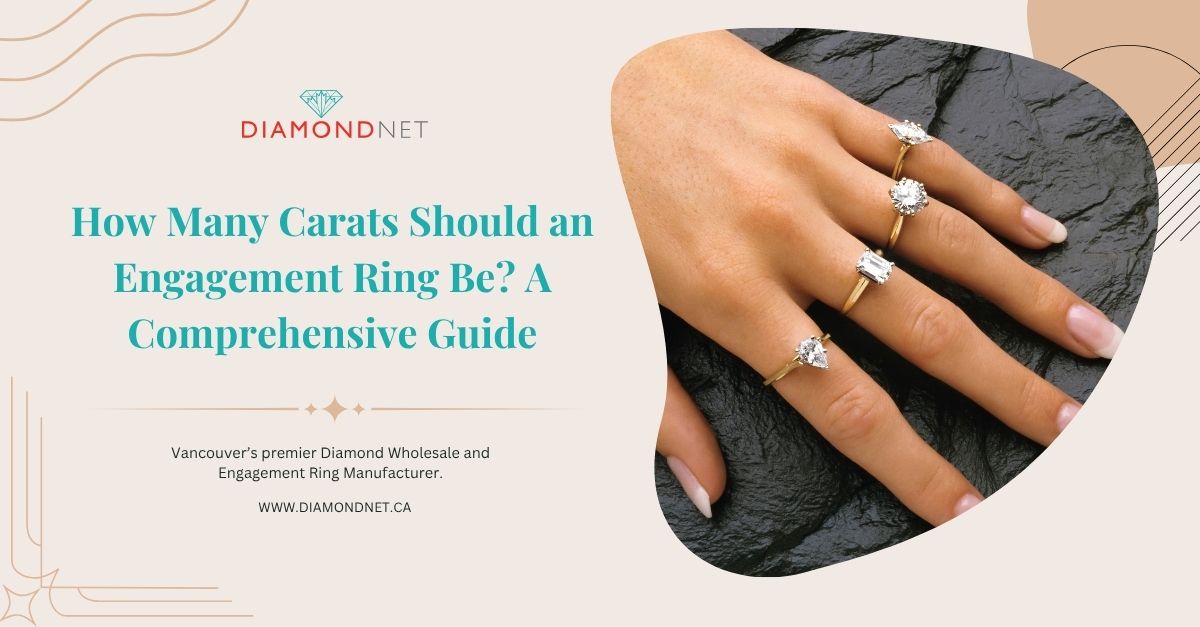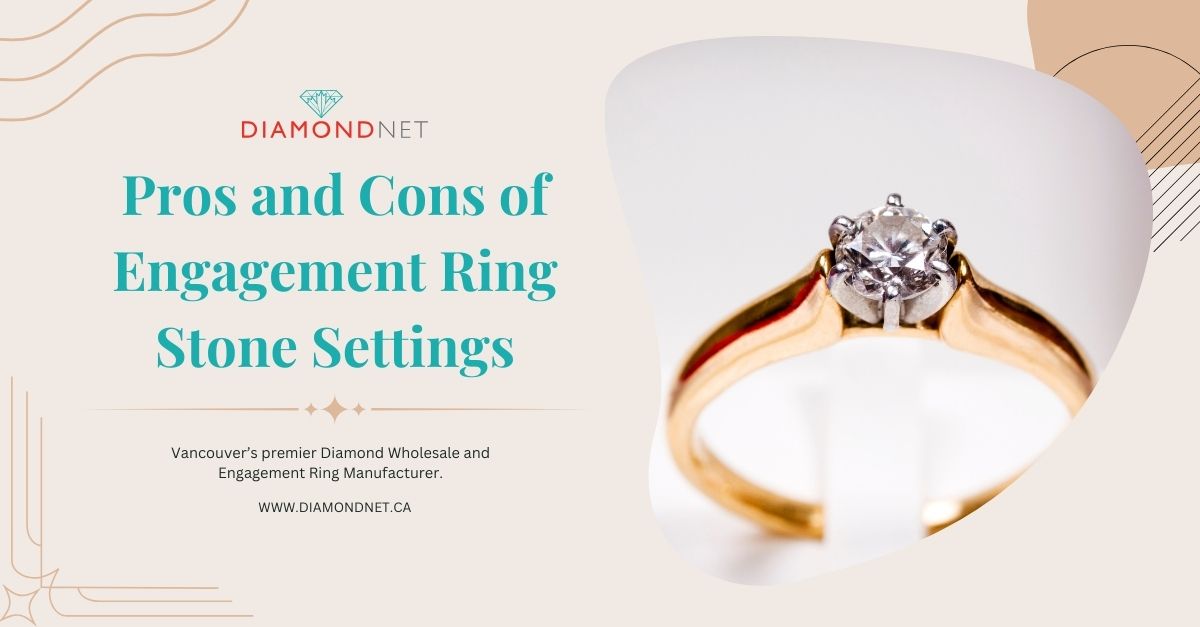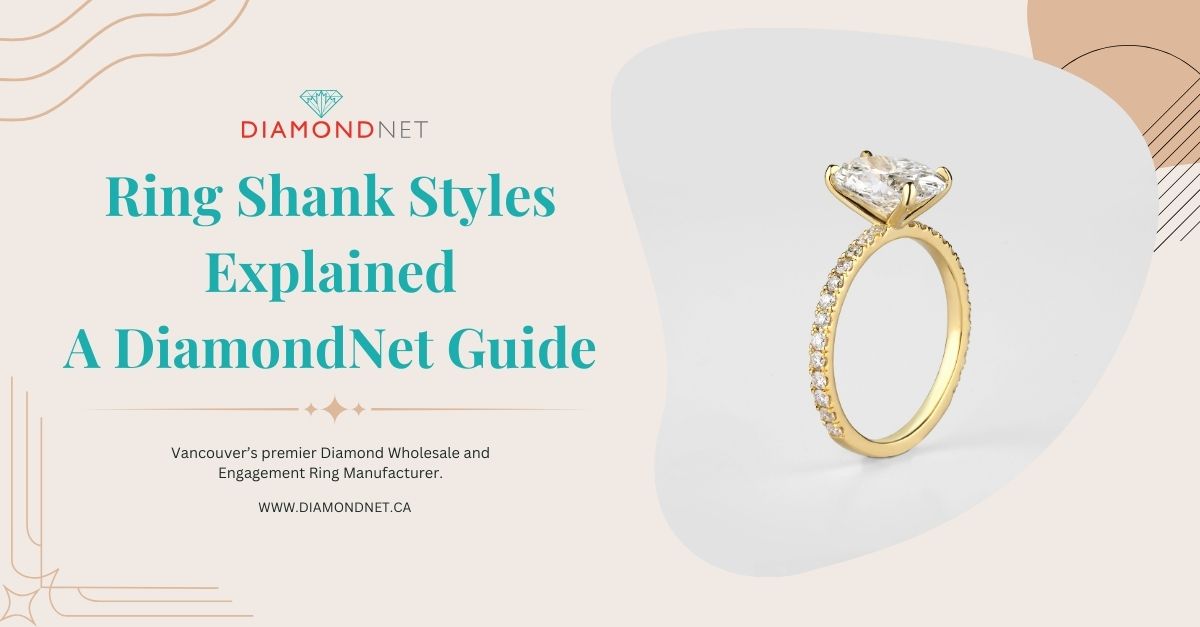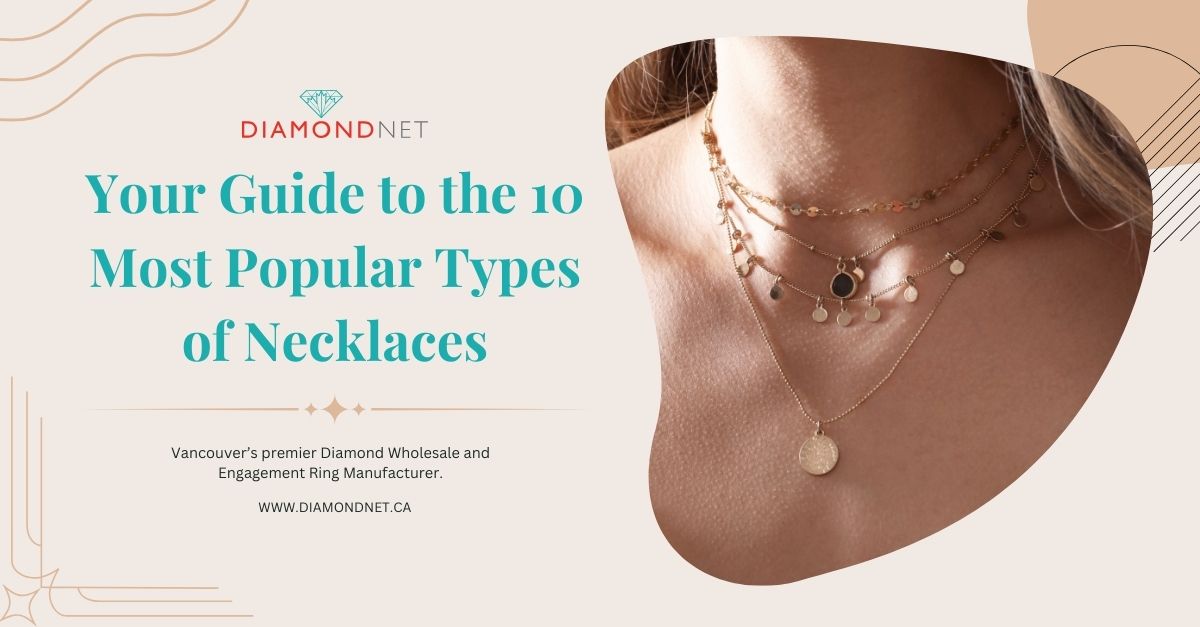When it comes to engagement rings, carat size isn’t just about how big the diamond looks. It also affects how the ring feels, what it costs, and how well it fits into your lifestyle.
Many buyers focus on the “look” of the stone, but carat weight plays a big role in long-term comfort and value. A well-chosen carat size balances appearance with meaning—and stays beautiful for years to come.
At DiamondNet Vancouver, we’ve guided thousands of clients toward rings that reflect their style, priorities, and budget. That experience has taught us one thing: clarity matters. Knowing what to expect makes it easier to choose with confidence.
This guide breaks down what carat weight really means, how it affects price and proportions, and how to make a smart, personalized choice.
Here is the Quick Answer:
The ideal carat size for an engagement ring depends on your budget, hand size, lifestyle, and personal values. While 1.0 ct is a popular benchmark in Canada, lab-grown diamonds offer more visual size for less, making them a great value-driven option. Cut quality, shape, and setting can all impact how large a diamond appears—sometimes more than carat weight alone. Whether you prioritize tradition, sparkle, or smart budgeting, DiamondNet Vancouver helps you make a confident, well-informed choice.
What does carat mean, and why does it affect value?
A carat is a unit of weight used to measure gemstones. One carat equals 200 milligrams. But here’s the catch: not all diamonds with the same carat weight look the same.
That’s because cut, shape, and proportions impact how big the diamond actually appears. For example, oval or marquise cuts can seem larger than round diamonds of the same carat weight.
Carat is one of the biggest drivers of diamond pricing. The higher the carat, the rarer the diamond—and the more expensive it becomes.
Even a small jump in weight can mean a significant price increase, especially as you cross popular “magic sizes” like 1.0 ct, 1.5 ct, and 2.0 ct.
Tip: A slightly smaller diamond (e.g., 0.97 ct instead of 1.0 ct) can save you money without sacrificing appearance. These “under-the-threshold” stones are a great way to maximize value.
Not sure how carat differs from karat? See our guide here.
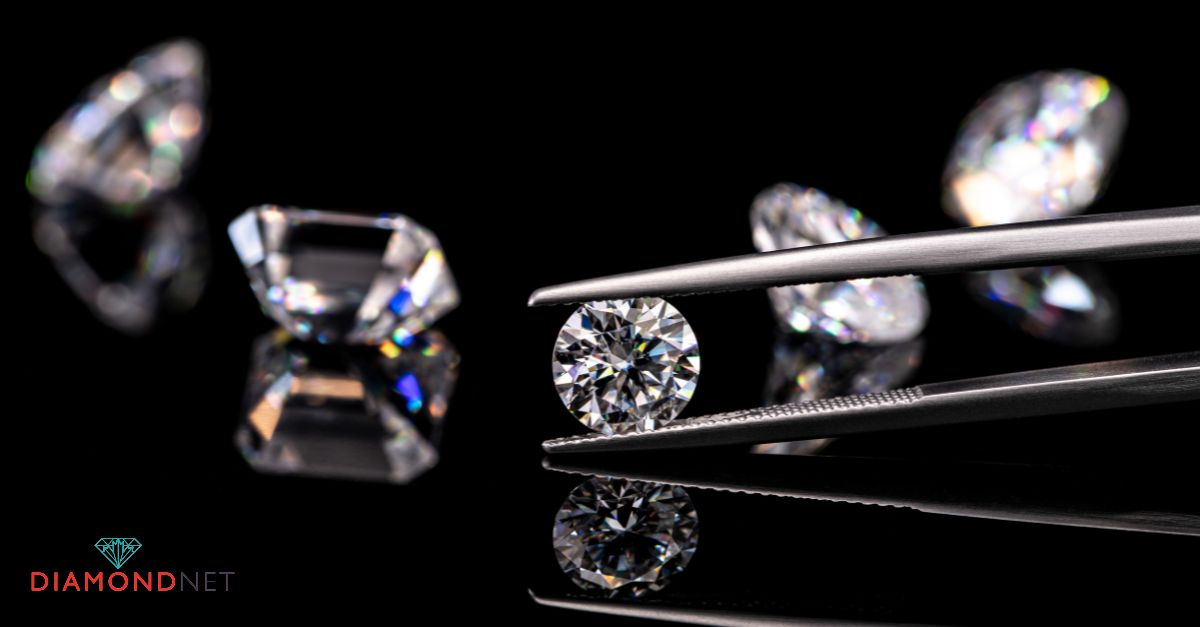
Key Factors in Choosing Carat Size
When it comes to carat size, there’s no one-size-fits-all. The right weight depends on your lifestyle, finger size, and how much you’re comfortable spending.
Here’s how to think it through:
1. Budget Constraints
Carat weight has a direct impact on cost. Prices rise sharply with each increase in weight, especially at popular benchmarks like 1.0 or 2.0 carats.
Lab-grown diamonds offer better size-for-price value whereas natural diamonds, especially larger ones, carry a premium due to rarity.
At DiamondNet.ca, you’ll find flexible pricing across both natural and lab-grown options.
Tip: Prioritize what matters most—size, sparkle, or origin—and balance it with your budget.
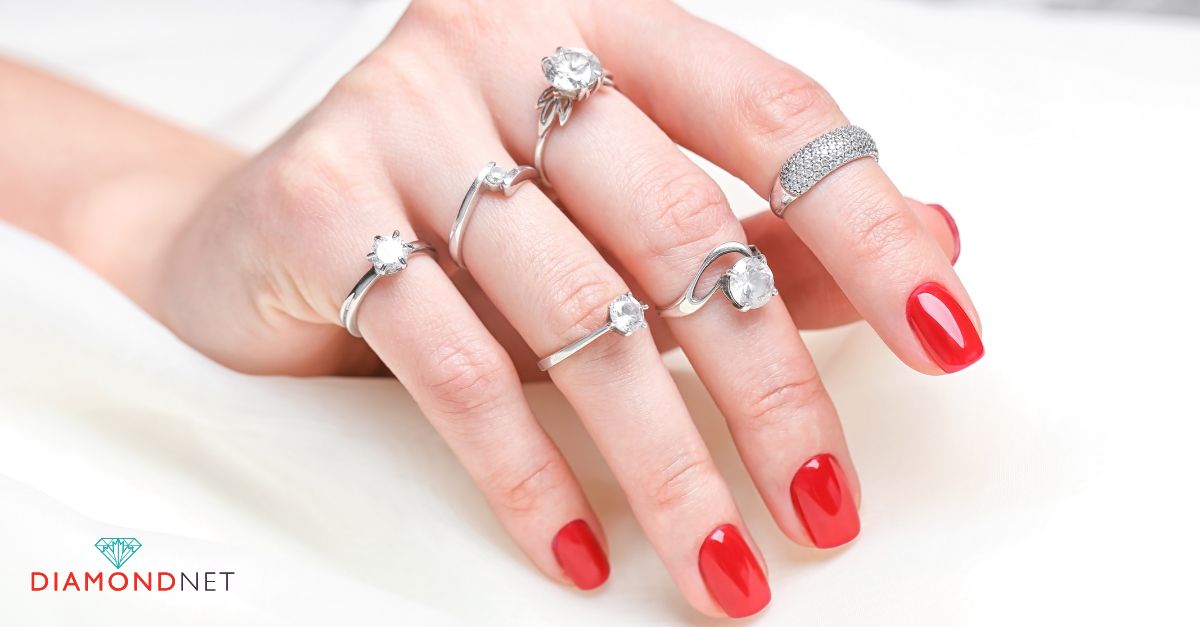
2. Finger Size and Proportions
The same carat weight can look different on different fingers.
Smaller hands may look best with 0.75 to 1.0 ct stones.
Larger fingers can easily support bigger stones without the ring looking oversized.
Try on a few carat weights in-store—or use a plastic ring sizer at home—to see what suits your hand best.
3. Lifestyle and Durability
Your daily routine should influence your choice.
If you’re active or work with your hands, opt for lower-profile settings and stones under 1.0 ct for comfort and safety.
For less hands-on lifestyles, larger stones can be worn more confidently—especially with durable settings like bezels or channels.
Average Carat Sizes by Region and Demographics
Engagement ring trends vary widely by region and culture. While some buyers opt for eye-catching sizes, others focus on minimalism or symbolic meaning.
Here’s how average carat sizes compare globally:
Canada
Carat-size preferences closely reflect U.S. trends. Most Canadian couples gravitate toward the 1.0 ct range—a sweet spot that balances impact and budget.
Lab-grown diamonds are helping more buyers afford larger looks without exceeding their price limits.
United States
According to The Knot’s 2024 Jewelry & Engagement Study, the average engagement ring size is 1.7 carats (including accent stones), while the average center stone size has increased to 1.8 carats, up from 1.7 carats in 2023. This reflects a growing desire for visually impactful rings.1
United Kingdom
Average engagement rings typically feature 0.6 ct center stones.
UK couples tend to value understated elegance over size.
Western Europe
Many countries across Western Europe report 0.5 ct averages.
Style often leans toward modest, low-profile settings over large diamonds.
Asia (e.g. China, Singapore)
In major urban centres, the average stone size falls between 0.5–0.7 ct.
The focus is frequently on clarity and cut rather than size alone.
Carat Weight vs. Visible Size
Not all diamonds of the same carat weight look the same. Two stones can weigh exactly one carat but appear noticeably different in size depending on cut quality, shape, and overall proportions.
Why Carat Weight Isn’t the Whole Story
A carat is a unit of weight—200 milligrams to be exact. But what you see is shaped more by a diamond’s face-up dimensions and how light reflects through it. That’s why a poorly cut 1.0 ct stone may look smaller than a well-cut one of the same weight.
How Carat Relates to Points
Diamonds under one carat are often measured in points, where 100 points = 1.00 ct. Here’s a quick breakdown:
| Points | Carat Weight | Common Term |
| 25 | 0.25 | Quarter Carat |
| 50 | 0.50 | Half Carat |
| 75 | 0.75 | Three‑Quarter Carat |
| 100 | 1.00 | One Carat |
Knowing this scale helps you understand diamond listings and compare options more precisely.
The “Magic” Carat Thresholds
Some carat sizes are especially popular and create noticeable pricing jumps. These magic weights include 0.50 ct, 1.00 ct, 1.50 ct, and 2.00 ct.
Buyers often favour these benchmarks, but prices jump significantly at these thresholds—even if the visual size difference is minor. Choosing a diamond just under the next magic size (like 0.97 ct instead of 1.00 ct) can result in major savings with little or no visible compromise.

The Impact of Shape and Setting on Perceived Size
Carat weight tells you how much a diamond weighs—but shape and setting play a big role in how large it actually looks. The right combination can make a diamond appear more prominent, even without increasing carat size.
Shapes That Appear Larger
Some shapes naturally maximize surface area, giving you more visual impact for the same carat weight:
- Oval & Marquise – These elongated shapes stretch across the finger, creating the illusion of greater size.
- Pear & Radiant – Tapered or angular edges draw the eye outward, boosting presence.
- Emerald Cut – The step-cut design adds dimension and spreads the stone’s weight horizontally.
Tip: Elongated stones not only look larger—they also create a slimming effect on the finger.
Settings That Enhance Size
Certain settings are designed to visually enhance the center stone:
- Prong Settings – With minimal metal around the diamond, prongs expose more of the stone’s surface and allow maximum light entry.
- Halo Settings – A ring of small diamonds encircling the centre stone adds sparkle and creates the illusion of a bigger diamond.
- Thin Bands – Slim shanks make the centre stone look more prominent by comparison.
Tip: Choosing a setting that complements your diamond’s shape can maximize its appearance—without going up in carat size.
Lab‑Grown vs. Mined Diamonds
Today’s buyers are increasingly comparing lab-grown and mined diamonds—not just for cost, but for value alignment, ethics, and long-term significance. Understanding the difference between the two can help you make a more informed choice.
Here’s why couples choose lab‑grown diamonds
✔ More Carats for Your Budget – Lab-grown diamonds typically cost 30–50% less than mined stones of comparable quality, allowing couples to select a larger or higher-grade diamond within the same budget.
✔ Visually Identical – Both lab-grown and natural diamonds have the same optical, physical, and chemical properties.
✔ Ethical Appeal – Produced in controlled environments, lab-grown stones often appeal to those who prioritize sustainability and traceable sourcing.
Lab-grown diamonds now account for over half of engagement ring sales in Canada and the U.S., largely due to their affordability and ethical appeal.
However, when thinking long term, it’s worth considering both what the diamond means to you and how it holds value over time:
- Resale Considerations – Lab-grown diamonds generally do not retain value as well as natural stones. If resale or long-term investment is a concern, a mined diamond may offer stronger retention.
- Sentimental vs. Strategic – For some, the rarity of a natural diamond carries symbolic or emotional weight. For others, lab-grown options offer the freedom to focus on visual size, quality, or custom design without compromise.
At DiamondNet Vancouver, both lab-grown and natural diamonds are available—certified, clearly explained, and matched to your personal priorities.
Practical Tips for Choosing Carat Size
Choosing the ideal carat size isn’t just about numbers—it’s about balance. Your personal style, budget, and lifestyle all shape the best decision. Here are actionable tips to help guide your selection:
✔ Set a Firm Budget First: Know your spending limit before diving into styles and sizes. A clear budget narrows choices and helps you avoid unrealistic options.
✔ Prioritize the 4Cs According to Your Values: Size isn’t everything. Decide what matters most—cut for brilliance, clarity for purity, or carat for presence—and adjust your priorities around those top preferences.
✔ Use Ring Preview Tools: Online or in-store tools that simulate how a diamond looks on your hand help you visualize proportions. Try sizing sticks, plastic models, or virtual previews to compare side-by-side.
✔ Consider Slightly Off-Standard Sizes: Diamonds just under major benchmarks (e.g., 0.90 ct vs. 1.00 ct) often look nearly identical but cost significantly less. These just-under sizes can offer excellent value.
✔ Test Diamonds in Real-World Lighting: Gemstones can look dramatically different in sunlight, office lighting, or candlelight. Always view your diamond under varied conditions before making a final decision.
Conclusion
There’s no universal rule for how many carats an engagement ring should be. While a 1.0 ct center stone remains a popular and practical benchmark—especially in Canada—the best choice is always the one that fits your style, values, and daily life.
If you’re looking to maximize visual size without exceeding your budget, lab-grown diamonds can be a smart and ethical option. For those who value rarity or long-term investment potential, natural diamonds may feel more meaningful.
Ultimately, a well-chosen carat size is one that reflects what matters most to you—whether that’s brilliance, presence, symbolism, or sentiment.
At DiamondNet Vancouver, we’re here to make that choice easier. Our expert advisors help you compare options, understand value, and design rings that tell your story beautifully.
Visit our showroom or book a private consultation to explore natural and lab-grown diamonds, custom designs, and personalized guidance from people who care about getting it right.
